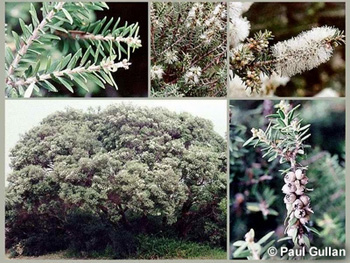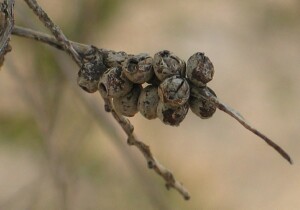Moonah
Back | Salinity Indicator Plants Home | Common name home | Scientific name home | Photo Gallery | Glossary
| Moonah photos |
| Scientific Name: | Melaleuca lanceolata | ||||||
Other Common Names: | Black Tea-tree, Dryland Tea-tree, Rottnest Island Tea-tree, Western Tea-tree | ||||||
Description: | Medium sized shrub or small tree, to 7 m high, often with a large domed canopy. Bark finely cracked, rough and grey-brown. Leaves alternate, narrow to linear-lanceolate, 5–10 mm long, 1–2 mm wide, smooth, dull-green, stiff, shortly stalked, often curved downwards. Flowering in summer, flowers white to cream, intermixed with leaves in an irregular bottle-brush like spike 3–6 cm long, the stamens in bundles of 12 and much longer than the petals. Fruit a spherical to ovoid woody capsule, 4–5 mm. | ||||||
Habitat: | Found on red clay loams in the Mallee and on reddish-brown, often saline, heavy clays subject to periodic waterlogging. Can be found on lighter soils in association with yellow box, or on highly calcareous soils scattered throughout the Mallee and Wimmera. Also occurs on white alkaline clayey sands around the margins of dry lakes.
| ||||||
Comments: | A key to the more common Melaleuca species on waterlogged and saline land can be accessed here – Key to Melaleuca. |
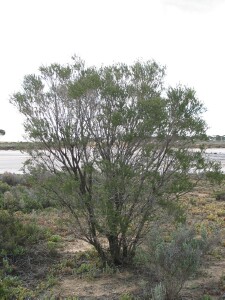 Moonah - tree Photo: A J Brown |  Moonah - bark Photo: A J Brown |
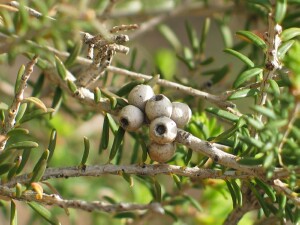 Moonah - fruit Photo: A J Brown | 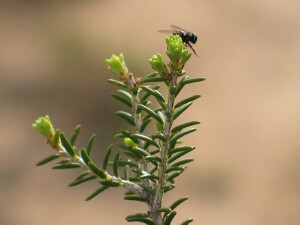 Moonah - tips Photo: A J Brown |
|

